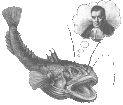UW Aquatic & Fishery Sciences Quantitative Seminar
E. Ashley Steel
US Forest Service
Water temperature: It's not just another number
Abstract
Riverine thermal regimes cannot be captured, understood, or managed through mean temperatures or single-point measurements. We now understand that thermal regimes include minute-by-minute, day-to-night, and season-to-season fluctuations in water temperature at every location within the stream network. They also include meter-to-meter and reach-to-reach variability at every minute in time. Human actions and other disturbances, e.g., dams, land-use, climate change, and wildfire, impact not only mean and maximum temperatures but also the variability and complexity of water temperature regimes. Such changes have the potential for dramatic sub-lethal effects on food web dynamics, species phenology, and community composition. We present, for example, experimental results linking degree-day delivery to Chinook salmon phenology and we explore the behavior of a mathematical model of Chinook salmon egg development when water temperatures are allowed to fluctuate. Understanding the drivers and patterns of thermal complexity is therefore essential for effective management of aquatic systems. Such efforts require a combination of extensive empirical data collection and new modeling approaches. Using data collected every 30-min across the Snoqualmie River, WA, we apply spatial stream network models (SSNMs) and wavelet decomposition to map variability at multiple time scales; explore spatial pattern across metrics and over time; and conceptualize which aspects of temporal variance are driven by within network versus out-of-network processes. We demonstrate, for example, that while the spatial distribution of mean temperature over the stream network varies little between summer and winter, the spatial distribution of variance varies tremendously between summer and winter. We also use this data collection network to provide guidance about how many water temperature sensors are needed and in what juxtaposition to predict particular facets of the thermal regime in particular seasons of interest.

